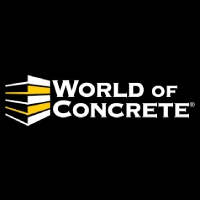





Top Strategies for Planning and Executing a Successful Trade Show
Setting Objectives and Goals
Trade show planning can be a daunting task, but it’s important to make sure that your objectives and goals are specific and measurable. Without clarity on what you’re trying to achieve, measuring progress or identifying setbacks will be difficult.
There are several factors you’ll want to consider when planning your trade show participation: the type of industry you work in, the target market for your products or services, how accessible your product is geographically speaking, and how much time and money you have available. Once you understand these factors, it’s time to develop targeted marketing strategies that focus on reaching those interested in what you have to offer.
Once all the pieces are in place – budgeting, targeting markets, etc – enter into negotiations with potential booth partners (as well as sponsors) based on mutual interests and expectations. Be prepared for concessions along the way (since most trade shows don’t occur at perfectly synchronized times), but remember that an overall successful trade show experience is worth working towards!
Importance of setting measurable and achievable goals. Clear objectives and goals are essential for trade show planning. Without them, it becomes difficult to measure progress or identify any setbacks. Furthermore, without measurable goals in place, marketing campaigns will be ineffective and budget constraints may become apparent early on in the process.
By setting specific objectives and goals, you’ll be able to track your progress as you work towards them. This information can help you make informed decisions about how best to allocate your time and resources while also providing a sense of achievement upon completion.
Choosing the Right Trade Show
Las Vegas is the perfect city for trade show planning. The weather is warm and sunny all year round, and trade show exhibitors can easily find accommodations near the event venue. Plus, there are plenty of other attractions in Las Vegas to keep exhibitors busy while they’re in town. If you’re planning your first trade show in Las Vegas, start by narrowing down your target market. Trade shows catering to specific industries or markets is often more successful than general-purpose events. Once you know what type of event you want to attend, consider the location of your event and select an exhibit space. Trade show venues in Las Vegas vary in size and capacity, so be sure to find out how many exhibitors your event will accommodate. Finally, plan the trade show marketing campaign and budget for hosting a successful event.
Trade show research is an important part of planning a successful event. Before you attend a trade show, be sure to do your research. Analyze the industry in which your business operates and find trade shows that cater to this market. Trade shows with large exhibit spaces are often more successful than those with smaller space capacities, so plan your budget accordingly. You can also evaluate trade show exhibits by their level of complexity and how well they match the features and services offered by your business. It’s also important to consider how long it will take you to attend the show and whether there is enough time for you to attend multiple trade shows in the same year.
Trade show marketing is essential for attracting exhibitors and generating business leads. Trade show planning software can help you plan your promotional strategy, track exhibit attendance data, and generate detailed marketing reports. You can also use social media platforms like Twitter and LinkedIn to promote your event. Finally, be sure to budget for travel expenses associated with attending a trade show. Las Vegas is an expensive city to live in, so factor this cost into your overall budgeting process.
Pre-Show Planning
One of the most important things you can do before any trade show is to plan your team’s roles and responsibilities. This will help ensure that everyone knows their job and has a solid understanding of what needs to be done in order for the show to go as planned. It’s also important to make sure everyone is on the same page about when tasks need to be completed in order for the showroom or booth space itself to look its best. And finally, assigning specific days and times for each task should help ensure that everything falls into place without any hassle or delay. There are tips for creating a successful exhibit design and layout. Layout and design of trade show exhibits can be daunting, but with a little planning and execution, you can create an exhibit that is attractive, efficient to display, and helps your business stand out from the competition.
First consider the purpose of your trade show exhibit: whether it’s a brand promotion or product showcase. Make sure you design your exhibit to support those goals; e.g., by using color schemes that appeal to different demographics or by including graphics or images that will capture the attention. Second, consider how customers will reach your products/services. Trade show exhibit space is often limited, so consider ways to display your products in an easily-accessed, organized way. Try grouping products by category or use dividers to create more visually- stimulating displays. Third, think about how participants will interact with your trade show exhibit. Are there any activities you can promote that would engage attendees? For example: offering product demonstrations or hands-on experiences? And finally, design your trade show exhibit for easy navigation and signage – customers should be able to find what they’re looking for quickly and easily.
On-site Execution
There are a few key factors trade show planners need to keep in mind when planning their show. The first is how much time they’ll have on-site. Many exhibitors will offer shortened launch periods for trade shows, so it’s important to plan your schedule accordingly. If you’re like most people, you probably want to make the most of your time at the show by gathering as much information as possible in one place. That’s why exhibitor exhibit halls tend to be packed full of product demonstrations and business meetings – it can be difficult (and time-consuming) to find the time to explore everything on your own.
The next key factor trade show planners need to consider is accessibility. Exhibitors may set up in different areas of the show floor, so it’s important to plan your walks around the show accordingly. It’s also a good idea to familiarize yourself with any exhibition maps that are available online in advance – this way, you’ll be able to navigate easily and avoid long queues when visiting exhibits. And finally, trade show planners should keep an eye out for important deadlines related to their event – some exhibitors require exhibitor sign-ups before show openings, and show deadlines can affect the exhibitor selection process.
Post-Show Follow-up
Exhibitor’s booth is one of the most important aspects of trade show planning. As exhibitors prepare for their trade show in Las Vegas, it is important to have a strategy for setting up and managing your booth. The following tips will help exhibitors collect and analyze data from their trade show:
Exhibitor space at a trade show can be quite limited, so it is important to plan ahead in order to get the best possible location. Many times, planners will offer early bird discounts which make nabbing an exhibit space more difficult.
Display space is the most important element of a trade show booth, and exhibitors should plan to exhibit items that will show off their company’s strengths. While there are many different trade show design templates available, it is important for exhibitors to create a display that reflects their brand and marketing strategy.
It is also important to have an effective sales strategy in place when planning your trade show in Las Vegas. Many times, planners offer pre-show lectures which provide valuable information about the market conditions in Las Vegas at the time of your trade show. It is also important to place promotional materials in strategic locations and to have a plan for marketing your trade show exhibit.
Our
SERVICES
Summary
Trade show planning in Las Vegas can be complex, but with the right strategy and timelines, exhibitors can achieve success. Keep an eye out for essential deadlines related to trade show planning in Las Vegas- some exhibitors require exhibitor sign-ups before show openings, and show deadlines can affect the exhibitor selection process.
